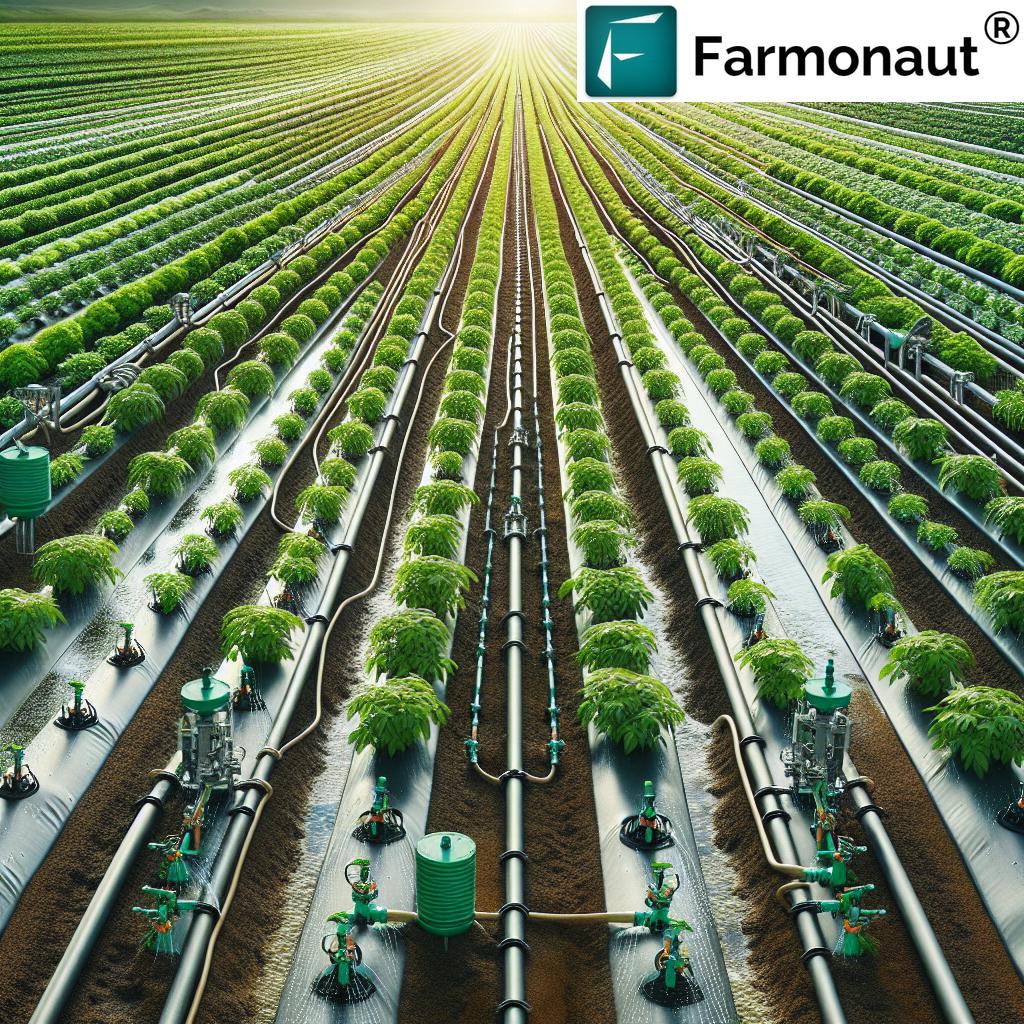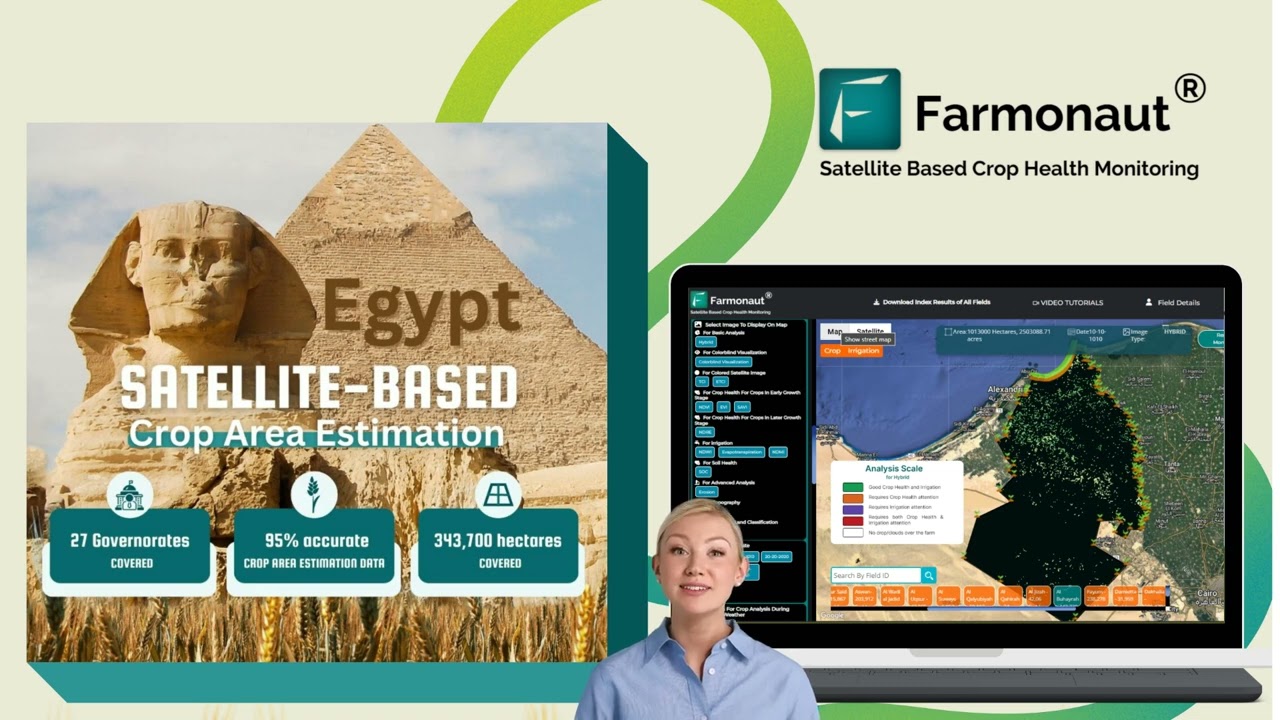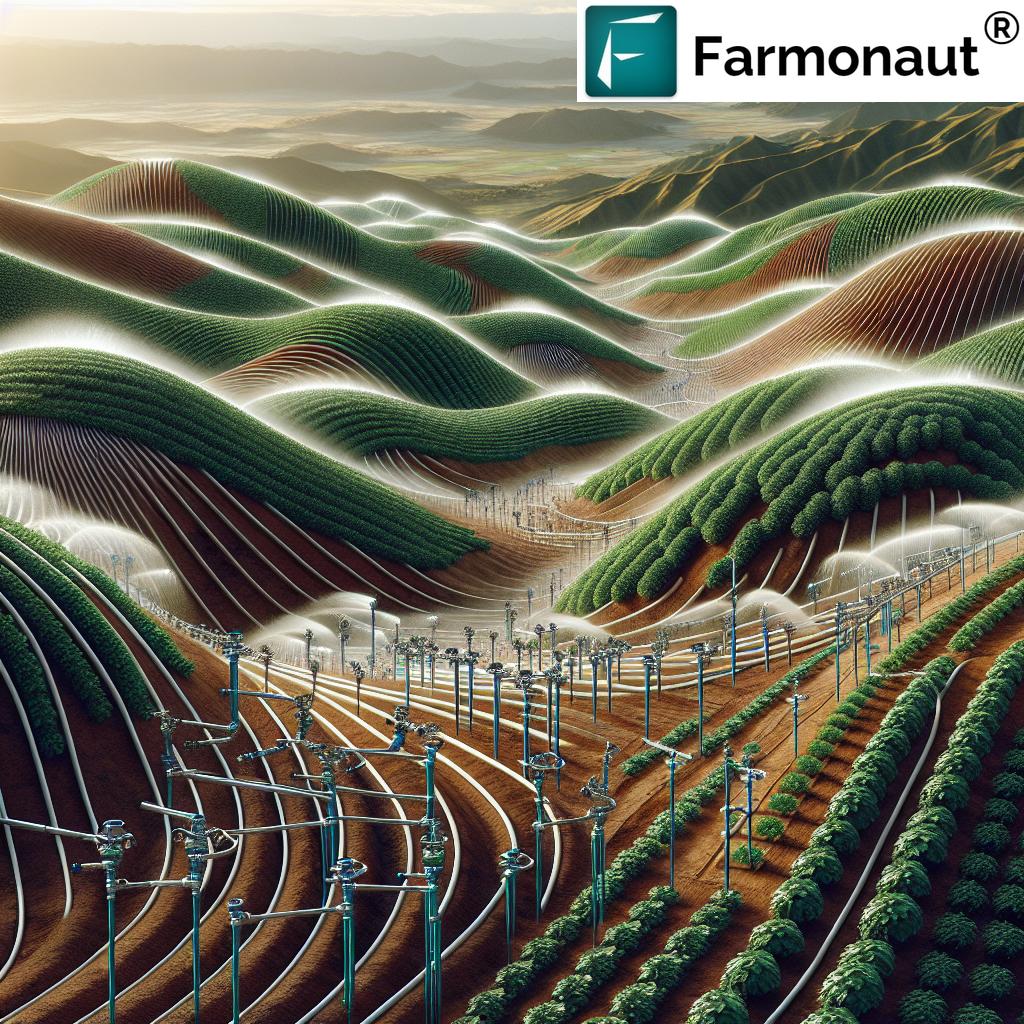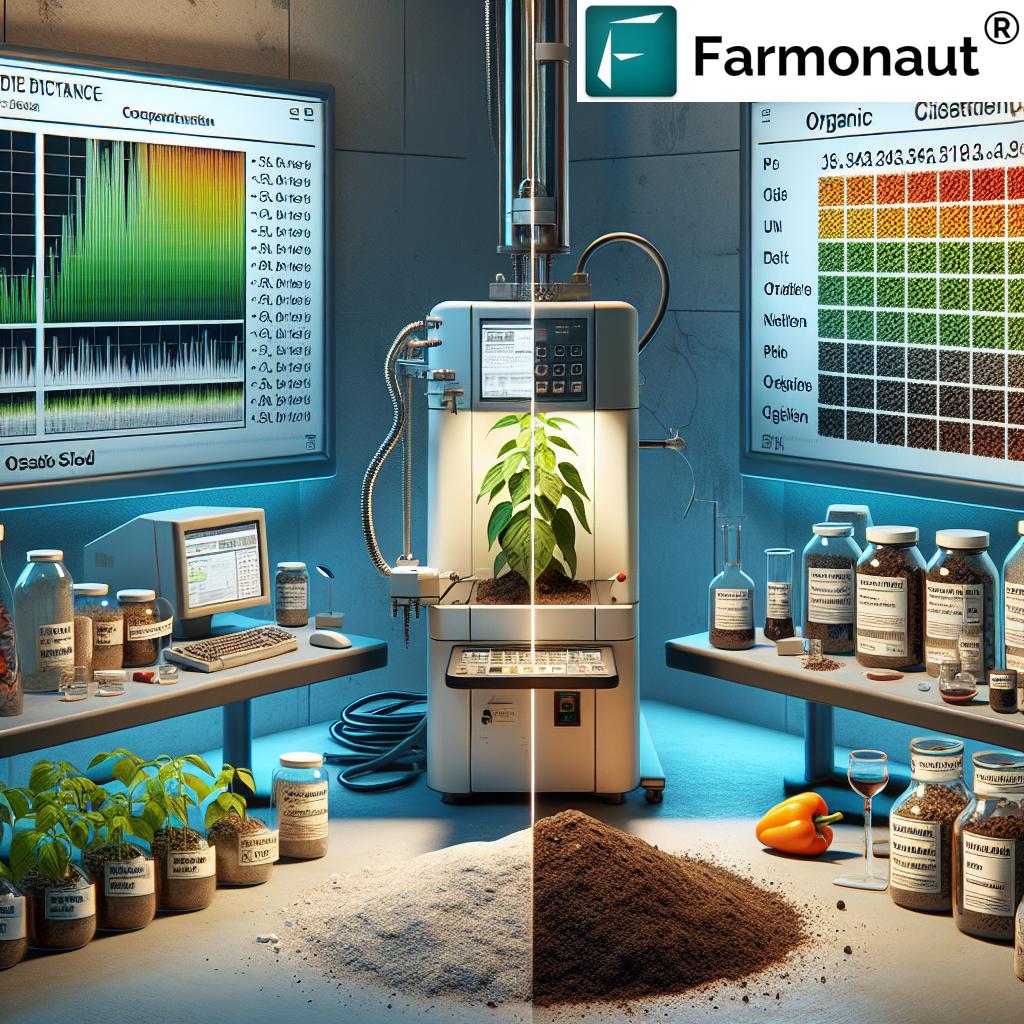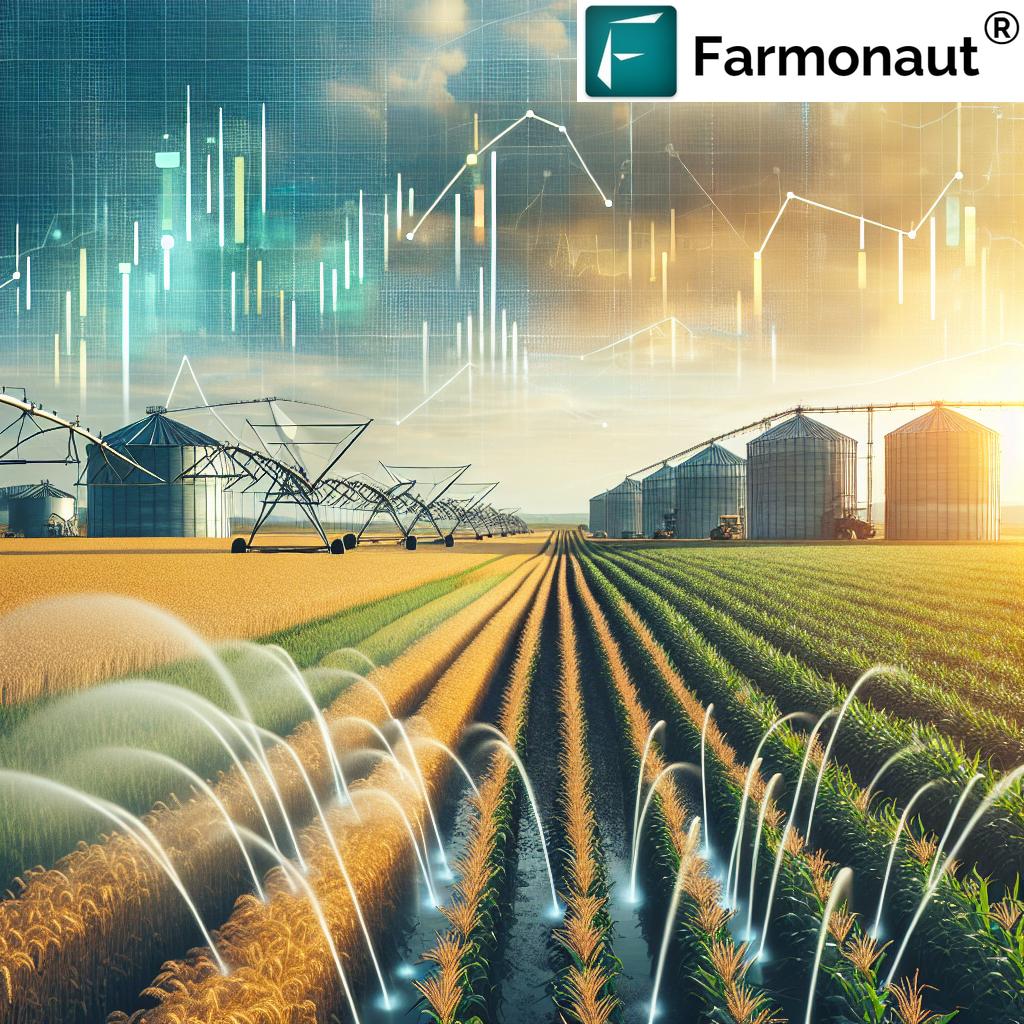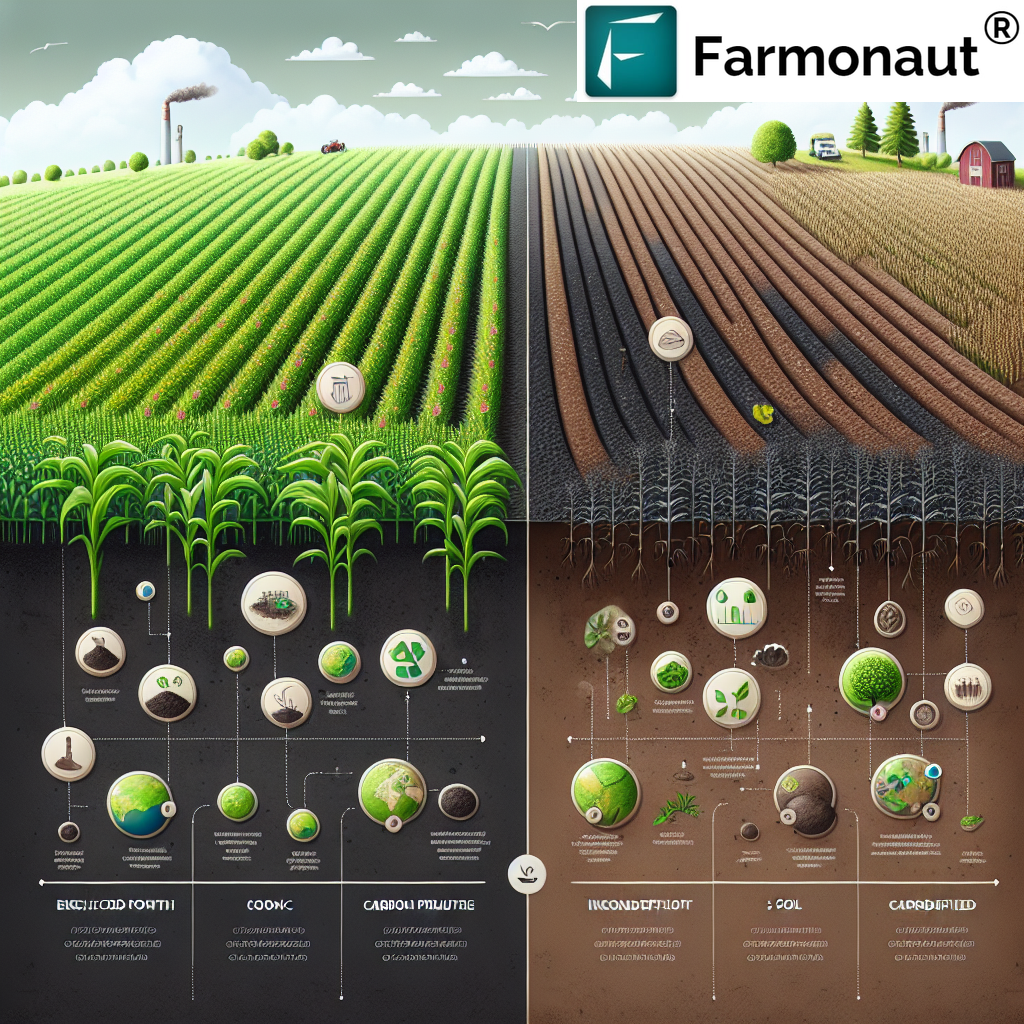Farm Water Management: 7 Secrets for Massive Yields
“Efficient irrigation can reduce farm water usage by up to 50%, significantly boosting crop yields sustainably.”
Introduction: Why Farm Water Management Matters
Farm water management is at the heart of sustainable agriculture. As farmers and agri-professionals, we understand that water is a limited resource, indispensable for crop growth, nutrient transport, and optimal yield. Yet, over 70% of global freshwater is consumed by agriculture. That is why adopting efficient irrigation systems and innovative water conservation practices isn’t just beneficial—it is vital for food security, environmental health, and the prosperity of rural communities.
“Over 70% of global freshwater is used for agriculture, making water management vital for food security.”
Farmonaut Video Insights
The Importance of Farm Water Management in Sustainable Agriculture
Our ability to feed a rapidly growing global population depends on how effectively we manage water in agriculture. Farm water management encompasses everything from selecting the most suitable irrigation systems to employing advanced water conservation practices for farmers. When we ensure the sustainable use of water resources, we don’t just secure higher yields for today—we safeguard the environment for future generations.
- Supports optimal plant growth, nutrient uptake, and photosynthesis.
- Prevents crop stress and reduces the risk of diseases.
- Results in increased crop quality and reduced input waste.
- Maintains environmental health by conserving groundwater and surface water supplies.
- Addresses water scarcity and helps conserve precious resources, especially in drought-prone regions.
Get real-time insights, AI-powered crop monitoring, and water management tools with the Farmonaut platform.
The 7 Secrets for Massive Yields: Transformative Farm Water Management
To achieve extraordinary results, we must reimagine how we utilize water, manage soil moisture, and integrate innovative agricultural water technologies across our fields. Our 7 secrets below are actionable, research-based, and proven to build resilience and amplify farm productivity.
1. Embrace Efficient Irrigation Systems
The right irrigation system can transform water efficiency and crop yields on any farm, whether it’s a smallhold in India or a large wheat field in North America. Let’s dive into the best-performing systems:
- Drip Irrigation: This system uses a network of tubes and emitters to deliver water directly to plant roots. The drip irrigation benefits are vast: minimizes evaporation, reduces runoff, lower water use by up to 50%, and is ideal for row crops, orchards, and greenhouse farming.
- Sprinkler Irrigation: Simulates natural rainfall by distributing water through pipes and overhead sprinklers. Sprinkler systems provide even coverage, suitable for diverse crops and terrains. They’re flexibility personified but may experience some loss due to evaporation especially in windy regions.
- Center-Pivot Irrigation: Rotating sprinkler systems mounted on wheeled towers—this method is a staple in large, flat fields, especially in the Americas and Australia. Center-pivot irrigation efficiently covers large areas with minimal labor input, streamlining management for commercial producers.
- Surface/Furrow Irrigation: While traditional and cost-effective for specific landscapes, efficiency can lag behind its high-tech counterparts. Suitable for rice, sugarcane, and pastures where water availability is less limiting.
How to Choose the Right Irrigation System?
- Assess your crop type: Row crops and orchards excel with drip; cereals and pastures often favor sprinkler or surface methods.
- Soil type & terrain: Sandy soils and uneven fields typically benefit from controlled systems like drip or pivot irrigation.
- Water availability: Scarce supplies call for maximum efficiency—drip and pivot systems help conserve groundwater and surface water.
- Budget & infrastructure: While initial investments may be higher for advanced systems, the long-term water savings and yield increases provide excellent ROI.
2. Implement Advanced Water Conservation Practices for Farmers
Maximizing water use efficiency doesn’t stop at irrigation system selection. Our water conservation practices for farmers build resilience and ensure long-term sustainability:
- Rainwater Harvesting for Farms: Collect and store rainfall—on rooftops or with field reservoirs—to reduce dependence on groundwater and public supplies. This is crucial in arid and semiarid regions.
- Mulching: Applying crop residue, straw, or plastic over soil helps retain moisture, suppresses evaporation, and improves soil structure, leading to reduced irrigation needs.
- Cover Cropping: Planting legumes, grasses, or other cover crops in off-seasons can minimize runoff, improve soil fertility, and enhance water infiltration.
- Reduced Tillage: Disturbing soil less frequently maintains organic matter and improves the soil’s water retention capacity, making fields more resilient to drought.
- Field Levelling: Precision land shaping prevents waterlogging and supports uniform water application—essential for both large-scale and smallholder farms.
Tip: Want to track rainfall, field moisture, and crop health with ease? Leverage Farmonaut’s AI-powered advisory and satellite-based monitoring tools to gain actionable insights for every season.
3. Master Crop Water Management Techniques
Not all crops require the same water at every stage of growth. That’s why mastering crop water management techniques can deliver remarkable water savings and yield improvement:
- Deficit Irrigation: Supply water below the full requirement during non-critical growth phases. For example, many fruit trees tolerate reduced irrigation after fruit set, saving water with minimal yield impact.
- Alternate Wetting and Drying (AWD): Especially suitable in rice fields, this method alternates between flooding and drying the soil, conserving water and reducing methane emissions. AWD can cut water use by up to 30%—while supporting healthy yields.
- Data-Driven Scheduling: Monitor weather, evapotranspiration, and crop stress indicators (NDVI, LAI) with satellite or sensor data, tailoring water applications to real crop need rather than set intervals.
- Soil Salinity Management: In regions with poor drainage or excessive irrigation, regularly leach salts below the root zone and monitor salinity using precision tools to preserve crop quality and productivity.
4. Harness Soil Moisture Management in Agriculture
One of the most important yet overlooked components in farm water management is soil moisture.
- Monitor: Use tensiometers, capacitance sensors, or remote sensing platforms relying on satellite data (like Farmonaut) to assess soil moisture in real time.
- Optimize: Time irrigation events to coincide with critical crop needs (flowering, grain filling), and avoid waterlogging or drought stress.
- Conserve: Combine precise irrigation with mulching and organic amendments to enhance water retention capacity.
- Rotate: Growing deep-rooted crops after shallow-rooted ones can help optimize water distribution in the root zone across crop cycles.
With data-driven soil moisture management in agriculture, we minimize water loss, boost crop yields, and maintain healthy, productive soils.
5. Integrate Technological Innovations in Water Management
Embracing innovative agricultural water technologies allows us to be more efficient, sustainable, and profitable.
- Precision Agriculture: By using remote sensing, AI, and satellite imagery—as on the Farmonaut platform—we gain access to real-time crop stress, biomass, soil moisture, and weather data. These insights power timely irrigation, fertilizer, and pest management interventions.
- Automated Irrigation Systems: Smart controllers and IoT sensors connect to weather forecasts and in-field conditions, ensuring water is delivered only when and where it’s needed.
- Solar-Powered Pumps: Sustainable and cost-efficient, these pumps tap into solar energy, reducing operational costs and reliance on fossil fuels.
- Blockchain in Water & Resource Management: Ensure transparency and trust throughout the agricultural supply chain. Track every input—from water sources to irrigation timing—using Farmonaut Traceability solutions, enhancing supply chain integrity for both producers and consumers.
- API Integration: Want to build custom agri-analytics or integrate Farmonaut’s powerful satellite/weather data into your systems? Access Farmonaut API or check out the developer docs.
6. Promote Rainwater Harvesting for Farms
In many regions facing declining precipitation or overexploited groundwater, rainwater harvesting is the lifeline of sustainable agriculture solutions.
- Benefits: Reduces pressure on wells and municipal supplies, recharges groundwater, and provides a reliable source during dry spells.
- How to Start: Install catchment structures—roof-top tanks, farm ponds, check dams, or contour bunds—tailored to your landscape and rainfall pattern.
- Storage: Regularly maintain and treat stored water to prevent contamination and ensure suitability for irrigation.
Farms in India’s southern states, parts of Africa, and the US South-West have realized significant savings by capturing every drop. Proper management ensures harvested rainwater directly boosts crop yields without environmental trade-offs.
7. Foster a Culture of Data-Driven Decision Making
With the advent of platforms like Farmonaut, farming has become truly data-informed. We can now:
- Visualize: Real-time maps for vegetation health (NDVI), water stress, and disease risk.
- Predict: Utilize weather AI to anticipate rainfall and drought, plan irrigation schedules, and manage harvest timing.
- Optimize: Combine historic satellite data with current crop and soil conditions to make the best use of every drop.
Farmonaut’s Jeevn AI Advisory System offers actionable, personalized advice for irrigation management, drought mitigation, and resource conservation, all powered by the latest research and machine intelligence.
Comparative Table: Irrigation Systems, Water Savings & Yield Impact
| Irrigation System Type | Estimated Water Savings (%) | Estimated Yield Increase (%) | Initial Investment Level | Best Use Cases |
|---|---|---|---|---|
| Drip Irrigation | 30–50% | 10–30% | High | Row crops, orchards, greenhouses, water-scarce areas |
| Sprinkler Irrigation | 15–25% | 5–15% | Medium | Vegetables, fruits, field crops, undulating terrain |
| Center-Pivot Irrigation | 20–30% | 10–20% | High | Large, flat fields (wheat, maize, soy), mechanized farms |
| Surface/Furrow Irrigation | 0–10% | 0–5% | Low | Rice, sugarcane, pastures, traditional farms |
| Subsurface Irrigation | 40–60% | 15–35% | Very High | High-value vegetables, research plots, water-scarce semi-arid regions |
Note: Values are estimates and may vary based on field conditions and system quality.
Farmonaut: Shaping the Future of Sustainable Agriculture Solutions
At Farmonaut, our mission is to empower farmers and agribusinesses worldwide with affordable, data-driven crop management. We deliver precision agriculture and farm water management insights, leveraging advanced satellite technology, AI, and blockchain to:
- Monitor real-time crop and soil moisture levels using multispectral satellite imagery.
- Provide personalized, AI-based irrigation, pest, and fertilizer recommendations with Jeevn AI Advisory.
- Enable carbon footprinting, satellite verification for crop loans and insurance, and full-fledged resource & fleet management via intuitive web and mobile apps.
- Support compliance and transparency in agri-supply chains via blockchain-based product traceability.
- Allow large-scale farm management for aggregators, government bodies, plantations, and forestry operations.
Our platform is accessible via android, iOS, browser app, and Developer-ready API (learn more here).
Featured Farmonaut Capabilities for Water Management
-
Carbon Footprinting:
Track and reduce the environmental impact of your farm by monitoring water, energy, and resource efficiency. -
Fleet Management:
Optimize logistics and water/fertilizer/machinery movement for large agri-enterprises, cutting costs and improving resource use. -
Crop Loan & Insurance Verification:
Easy, satellite-backed verification for crop loans and insurance—reduce risk and boost credit access for farmers. - Crop Plantation & Forestry Advisory: Get current, research-based guidance for plantation management and forestry operations—all powered by AI.
Key Challenges in Implementing Efficient Farm Water Management
Despite the clear benefits, real-world implementation can be complex. Here’s how we can address key obstacles:
- Water Scarcity:
- Solution: Adopt drip and deficit irrigation, rainwater harvesting, and field-level moisture monitoring to maximize available supplies.
- Local context: Western US, Southern Spain, parts of Africa and India face intense scarcity—innovative methods are rapidly being deployed in these regions.
- Soil Salinization:
- Solution: Avoid over-irrigation, supplement with drainage infrastructure, and monitor regularly using satellite data and field sensors.
- Infrastructure Limitations:
- Solution: Invest in upgrading irrigation infrastructure, line canals, and deploy mobile-based management/monitoring apps for real-time fault detection and maintenance scheduling.
- Economic Constraints:
- Solution: While precision irrigation tech can require upfront investment, incentives and long-term savings/yield gains often outweigh costs.
- Government and NGO support are vital; Farmonaut’s affordable subscriptions (see below) aim to make precision ag accessible to all.
- Climate Variability:
- Solution: Incorporate adaptive scheduling and multi-year remote sensing data, as available from Farmonaut, into planning for drought/flood years.
- Knowledge & Training Gaps:
- Solution: Farmer education and digital tools for early warning, advisories, and tech adoption are essential.
Policy, Regulation & Farmer Incentives for Effective Crop Water Management
Governments, research institutions, and technology providers must work hand-in-hand to foster sustainable water use.
- Regulation of Groundwater: For instance, Arizona’s Willcox Groundwater Basin is now an “active management area”—a model for other regions in addressing overextraction and groundwater depletion.
- Financial Incentives: Subsidies and tax breaks support farmer adoption of micro-irrigation, soil sensors, and remote crop-water monitoring.
- Research & Education: Investment in drought-resistant varieties, farmer workshops, and field days hastens adoption of science-backed best practices.
Proactively engaging with these policy instruments enables all of us to build resilience in the face of climate and resource challenges.
Farmonaut Platform Access & Subscription
Ready to transform your irrigation strategy with real-time data, AI-powered advisory, and field-scale analytics? Choose a Farmonaut subscription right for your needs below.
FAQ: Farm Water Management, Efficient Irrigation, and Sustainable Solutions
Q1: What is farm water management and why is it crucial for sustainable agriculture?
A: It involves the systematic planning, control, and monitoring of water use throughout all farming operations. Effective management ensures crops receive the right water at the right time, reduces waste and environmental impact, maintains soil health, and supports long-term productivity—even in regions with water scarcity.
Q2: What are the benefits of drip irrigation?
A: Drip irrigation benefits include delivering water directly to plant roots, minimizing evaporation and runoff, saving water (up to 50%), and supporting precise application of fertilizers and nutrients. It’s ideal for row crops, orchards, and greenhouses where efficiency and root zone management are priorities.
Q3: How can Farmonaut help in farm water management?
A: Farmonaut offers real-time satellite-based crop and soil moisture monitoring, AI-powered irrigation and resource advisory, and a comprehensive suite of digital tools for optimizing field-level water use. The platform is accessible via mobile, web, and API integration, making advanced crop water management accessible to farms of all sizes and types.
Q4: How can I adopt water conservation practices on my farm?
A: Start with rainwater harvesting, mulching, and cover cropping; implement reduced tillage, upgrade to efficient irrigation systems, and use digital tools for monitoring soil and crop moisture in real time. Educate your team and regularly review performance against water usage targets.
Q5: What are some challenges in implementing new irrigation technologies?
A: Barriers may include initial investment costs, lack of infrastructure or technical know-how, and adapting traditional practices. Farmonaut’s affordable subscriptions, intuitive interface, and educational resources help lower the adoption barrier and ensure smooth implementation.
Q6: Can water management improve both yield and environmental outcomes?
A: Absolutely. Efficient water management increases yields by supporting optimal crop growth, minimizes waste, and reduces the environmental impact (e.g., by reducing groundwater extraction, soil erosion, and methane emission from rice fields).
Q7: Is Farmonaut suitable for large and small farms alike?
A: Yes. Farmonaut’s scalable solution suite empowers both individual smallholders and large agricultural enterprises. The modular approach allows customization to user needs, farm scale, and crop type.
Conclusion: Ensuring a Water-Smart Agricultural Future
Farm water management is not just a farming best practice—it is the cornerstone of sustainable agriculture, food security, and rural prosperity. By adopting efficient irrigation systems, implementing robust water conservation practices, and harnessing advanced technological innovations like those provided by Farmonaut, we can dramatically improve crop quality and yields, preserve precious water resources, and secure the future of our farms and forests.
- Embrace data-driven, precision agriculture for optimal water and nutrient efficiency.
- Implement innovative, location-appropriate irrigation and rainwater harvesting systems that guarantee sustainability through every season.
- Overcome infrastructure and knowledge barriers via digital advisory, ongoing education, and affordable, scalable technology.
Remember: Every drop counts. Our collective commitment to improving crop yields with water management will not only transform agriculture today but will set the foundation for lasting environmental health and food security for generations to come.
Ready to take the leap? Start your water-smart journey with Farmonaut—accessible on Web, Android, and iOS!


